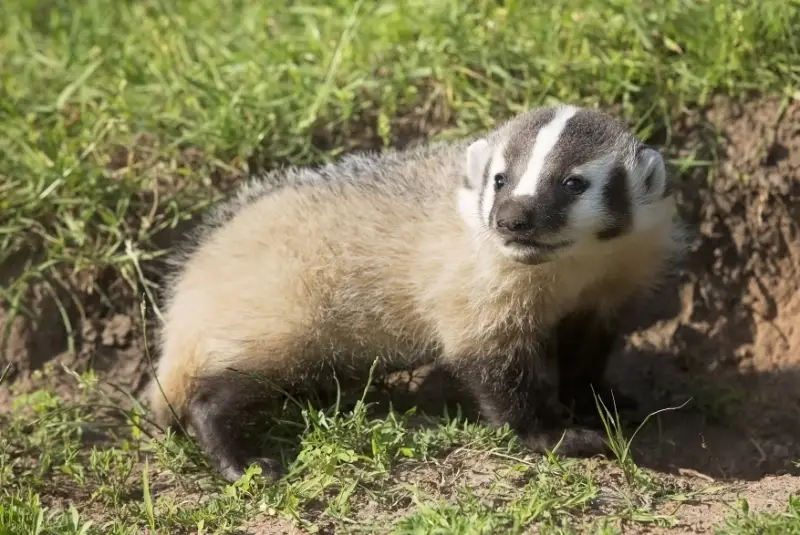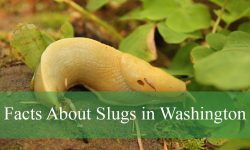Michigan’s wilderness holds a variety of fascinating creatures, but few have stirred as much curiosity in recent years as the American badger. Long considered elusive or even absent in certain regions of the state, these burrowing mammals have suddenly returned to the spotlight, generating both excitement and confusion among wildlife experts and outdoor enthusiasts. Their reappearance is not only surprising—it challenges old assumptions about Michigan’s ecosystems and raises new questions about conservation, habitat change, and coexistence with humans.
Understanding the secret life of badgers in Michigan requires a deeper look into their natural behavior, ecological roles, and the historical patterns that once drove them to near disappearance. Their comeback is a compelling tale of resilience, adaptation, and the unpredictable rhythms of the wild.
The Mysterious History of Badgers in Michigan

The American badger (Taxidea taxus) has long roamed the grasslands and open prairies of North America. Known for their powerful digging abilities, solitary habits, and tenacious nature, these animals are more often associated with the Great Plains and western states than with the forests and lakes of Michigan. Historically, badgers did inhabit the state’s lower peninsula, especially in regions with sandy soils and open fields. However, sightings became increasingly rare through the 20th century, and for decades, they were thought to be nearly extinct within Michigan’s borders.
Several factors contributed to their decline. Habitat fragmentation played a major role as agriculture expanded and open lands were converted into urban and suburban developments. Badgers require large territories with access to prey such as ground squirrels and gophers, and the shrinking of their preferred environments drastically impacted their survival chances. In addition, their secretive, nocturnal nature made them hard to track, often leading to underreporting or misidentification in wildlife surveys.
Despite the lack of consistent sightings, rumors and sporadic encounters persisted over the years. Trappers, farmers, and hunters occasionally reported seeing badgers, but these claims were often dismissed as misidentifications. The badger’s reputation as a ghost of the prairie began to take root in Michigan lore.
A Sudden Shift: The Reappearance of a Forgotten Species
In the last two decades, reports of badgers have grown more frequent across southern and central Michigan. Trail cameras, roadkill documentation, and firsthand observations by conservationists have confirmed what many had once doubted—badgers are not only present, but they are slowly expanding their range within the state. This resurgence has taken many by surprise, especially because it lacks a clear, single explanation.
One theory centers around habitat change. As agricultural practices have shifted, with some farmland reverting back to wild prairie or being managed as conservation land, suitable habitats for badgers have quietly reemerged. These areas offer the open ground, prey availability, and cover that badgers need to thrive. In addition, wildlife corridors created through ecological restoration projects have helped link fragmented landscapes, allowing badgers to move more freely and establish new territories.
Climate change may also be playing a subtle role. Warmer winters and shifting ecological zones can impact the distribution of prey species, indirectly benefiting opportunistic predators like the badger. These environmental shifts may be creating conditions more favorable for their survival in areas where they once struggled.
The Secretive Nature of Michigan’s Badgers
Badgers are, by design, hard to observe. They are solitary and nocturnal, spending most of their time underground in complex burrow systems. This reclusive behavior helps them avoid predators and human disturbance, but it also means that populations can go unnoticed for years. In Michigan, this has allowed small populations to persist and possibly grow without being recognized by the broader public.
Their dens, often called “setts,” are usually located in open meadows, fields, or pastures. A typical sett can have multiple entrances and deep tunnels, often reused or expanded over time. These burrows serve as nesting sites, hunting bases, and refuges from harsh weather. While a single badger may dig and occupy a sett, others may take over abandoned systems, indicating a network of hidden infrastructure beneath the landscape.
The diet of a Michigan badger largely mirrors that of their western counterparts. They primarily feed on small mammals like groundhogs, rabbits, and mice, but they are also known to eat birds, insects, and even reptiles. Their hunting strategy often involves digging prey out of burrows, a technique requiring incredible strength and determination. In agricultural areas, this behavior can be both beneficial—by controlling rodent populations—and controversial, due to damage caused to fields or irrigation systems.
Conservation and Monitoring Efforts in the State
The Michigan Department of Natural Resources (DNR) has begun taking a closer interest in the state’s badger population. While not officially listed as threatened or endangered, the species is considered a Species of Greatest Conservation Need in the state’s Wildlife Action Plan. This designation reflects the need for more data and better understanding of population dynamics, habitat requirements, and potential threats.
To this end, wildlife biologists have launched efforts to track sightings, gather photographic evidence, and analyze roadkill reports. These data points help map badger activity and guide future conservation actions. Additionally, partnerships with landowners and hunters have provided valuable information, especially in rural areas where badgers are more likely to be encountered.
Public education is also a key component. Many residents are unfamiliar with badgers or unaware of their return to Michigan. By raising awareness and encouraging responsible reporting, agencies hope to foster coexistence and reduce conflicts. For example, understanding that badger burrows are part of a healthy ecosystem may help prevent unnecessary removal or disturbance by landowners.
Human Interactions and Rural Perspectives
As with many wildlife recoveries, the return of the badger brings both wonder and concern. Farmers, in particular, have mixed reactions. On one hand, badgers can help control pest populations that damage crops. On the other hand, their digging habits can cause problems for machinery, irrigation systems, and livestock. These conflicts are not new, but they are becoming more visible as the animals reappear in areas where they were once absent.
In some rural communities, the badger carries a strong cultural association. Their fierce demeanor and persistence have earned them a reputation for being tough and almost mythical. Some residents view their comeback as a sign of nature healing itself, while others worry about the implications for land management and agriculture. This tension underscores the importance of open dialogue and collaborative conservation planning.
Education and outreach can go a long way in addressing concerns. When people understand the ecological role of badgers—as keystone predators and soil aerators—they are more likely to support measures that protect their habitat. The use of fencing, alternative tilling methods, or careful monitoring of burrow sites can help reduce damage while allowing badgers to remain in the area.
The Role of Citizen Science and Technology
One of the driving forces behind the rediscovery of badgers in Michigan has been the rise of citizen science. Trail cameras, wildlife apps, and social media have empowered ordinary people to document wildlife encounters like never before. These tools have filled critical gaps in scientific data, especially for elusive species like the badger.
Platforms such as iNaturalist and eBird (though designed primarily for birds) have inspired broader interest in tracking mammals, amphibians, and other wildlife. Photos of badgers caught crossing rural roads or digging in remote meadows have made their way into research databases, contributing to a growing understanding of where and how these animals are living.
In some cases, farmers and landowners have even installed motion-triggered cameras to monitor fields for crop-damaging animals, only to discover badgers on their property. These unexpected encounters often lead to a renewed interest in local biodiversity and a desire to learn more about how to live in harmony with native species.
What the Badger’s Return Says About Michigan’s Ecosystems
The return of the badger is more than just a curiosity—it is a reflection of broader ecological shifts. The ability of this species to survive and slowly repopulate areas once deemed unsuitable speaks to the resilience of nature when given space and time. It also hints at the success of certain conservation efforts, such as land restoration, reduced pesticide use, and the creation of wildlife corridors.
However, it also raises questions about what other species may be returning under the radar. If a large, carnivorous mammal can avoid detection for decades, what does that suggest about smaller or more secretive animals? The badger’s story reminds us that ecosystems are constantly in motion, and our understanding of them is always evolving.
This realization encourages humility in ecological management. It challenges assumptions and reinforces the importance of habitat preservation—not just for well-known or charismatic species, but for those that operate quietly beneath the surface.
Looking Ahead: The Future of Badgers in Michigan
The resurgence of badgers in Michigan is still in its early stages. While sightings are increasing, the population remains relatively small and scattered. Long-term survival will depend on continued habitat availability, thoughtful land-use practices, and ongoing monitoring by wildlife agencies and communities alike.
Future research will likely focus on reproductive rates, genetic diversity, and movement patterns within the state. Understanding how isolated populations connect—or fail to connect—can inform strategies to maintain healthy, viable populations. There may also be opportunities for public involvement through volunteer monitoring, habitat stewardship programs, and educational campaigns.
As Michigan continues to balance development with conservation, the badger serves as a symbol of what’s possible when ecosystems are allowed to recover. Its comeback is a testament to the quiet strength of nature and a call to remain vigilant, curious, and committed to the protection of all native wildlife.
FAQs About Badgers in Michigan
What do badgers in Michigan eat?
Badgers in Michigan primarily feed on small mammals such as groundhogs, mice, and rabbits. They also eat insects, reptiles, and occasionally birds. Their powerful digging ability allows them to hunt prey that lives underground.
Are badgers dangerous to humans?
While badgers are fierce when threatened, they are generally not dangerous to humans. They avoid confrontation and prefer to remain hidden. However, they can be aggressive if cornered or protecting their young.
Where are badgers most commonly found in Michigan?
Recent sightings have been confirmed in southern and central Michigan, especially in open fields, meadows, and conservation lands with sandy or loamy soils.
Are badgers protected in Michigan?
Badgers are not listed as endangered, but they are considered a Species of Greatest Conservation Need. Conservation efforts focus on habitat preservation and monitoring to ensure population stability.
How can I report a badger sighting?
You can report badger sightings to the Michigan Department of Natural Resources or use platforms like iNaturalist to contribute to wildlife data. Clear photos and location details are helpful for researchers.






